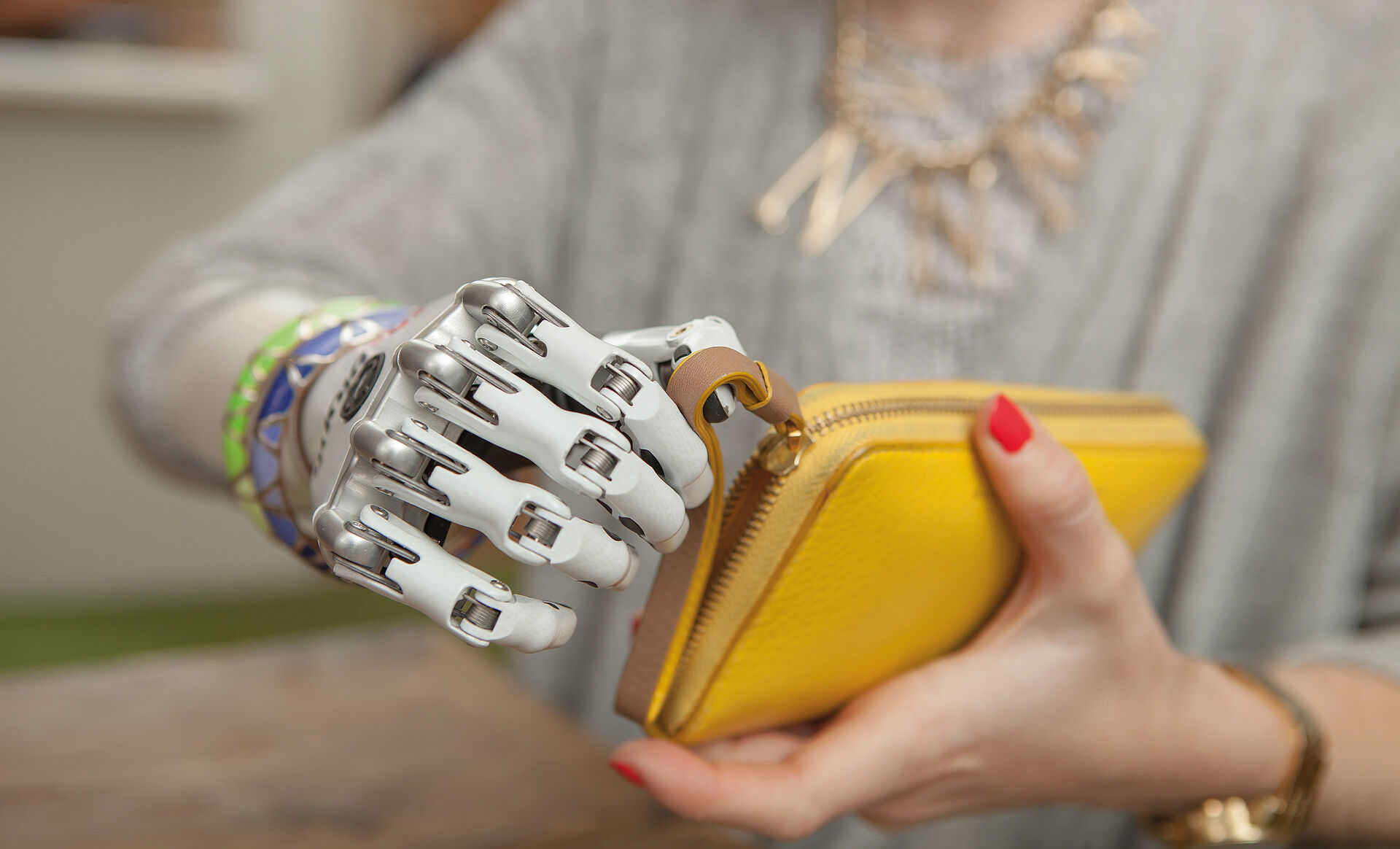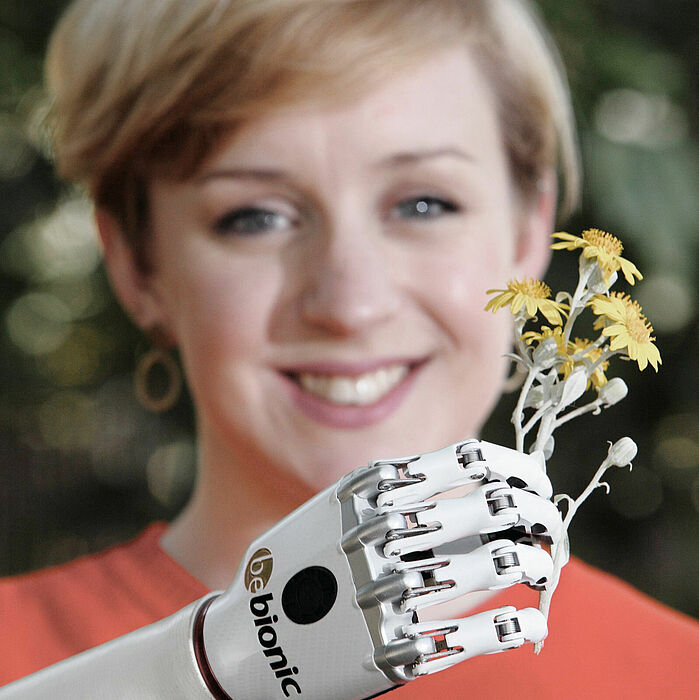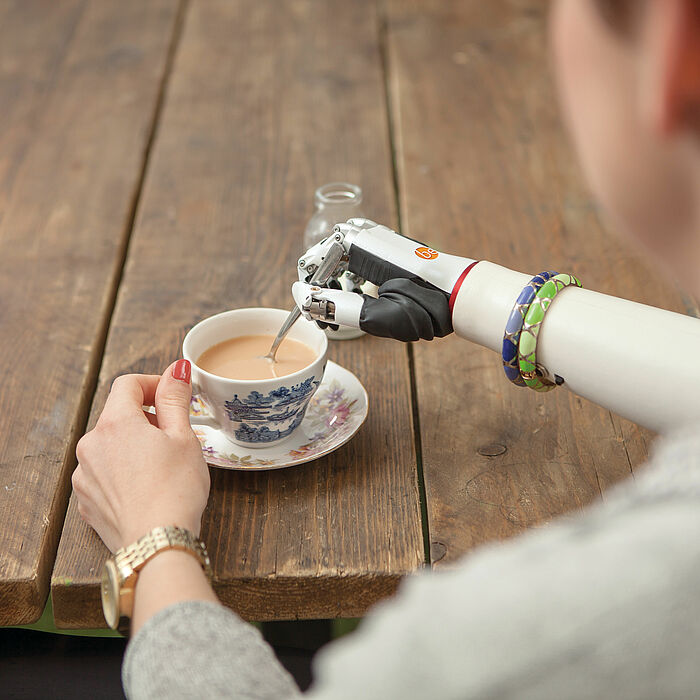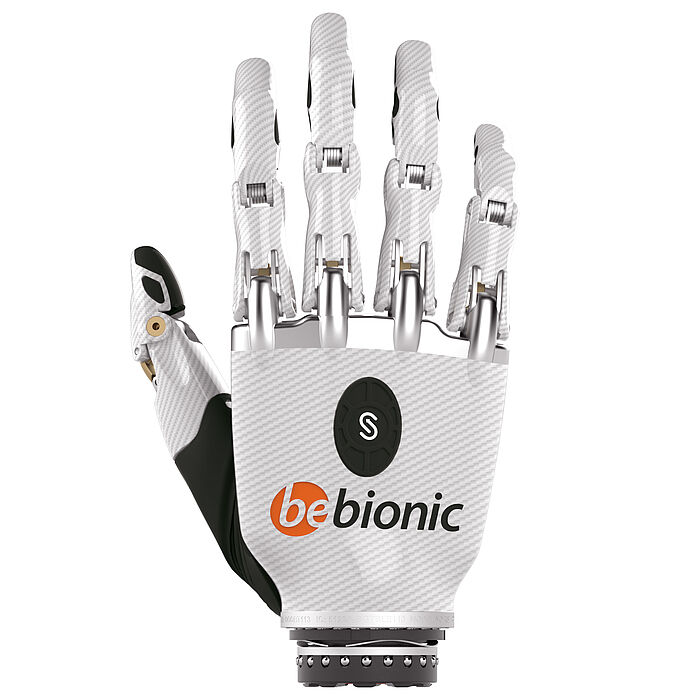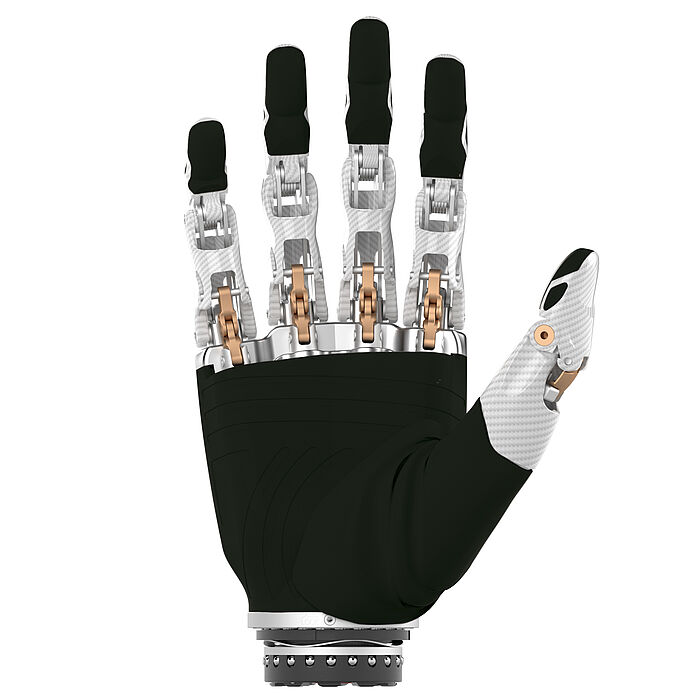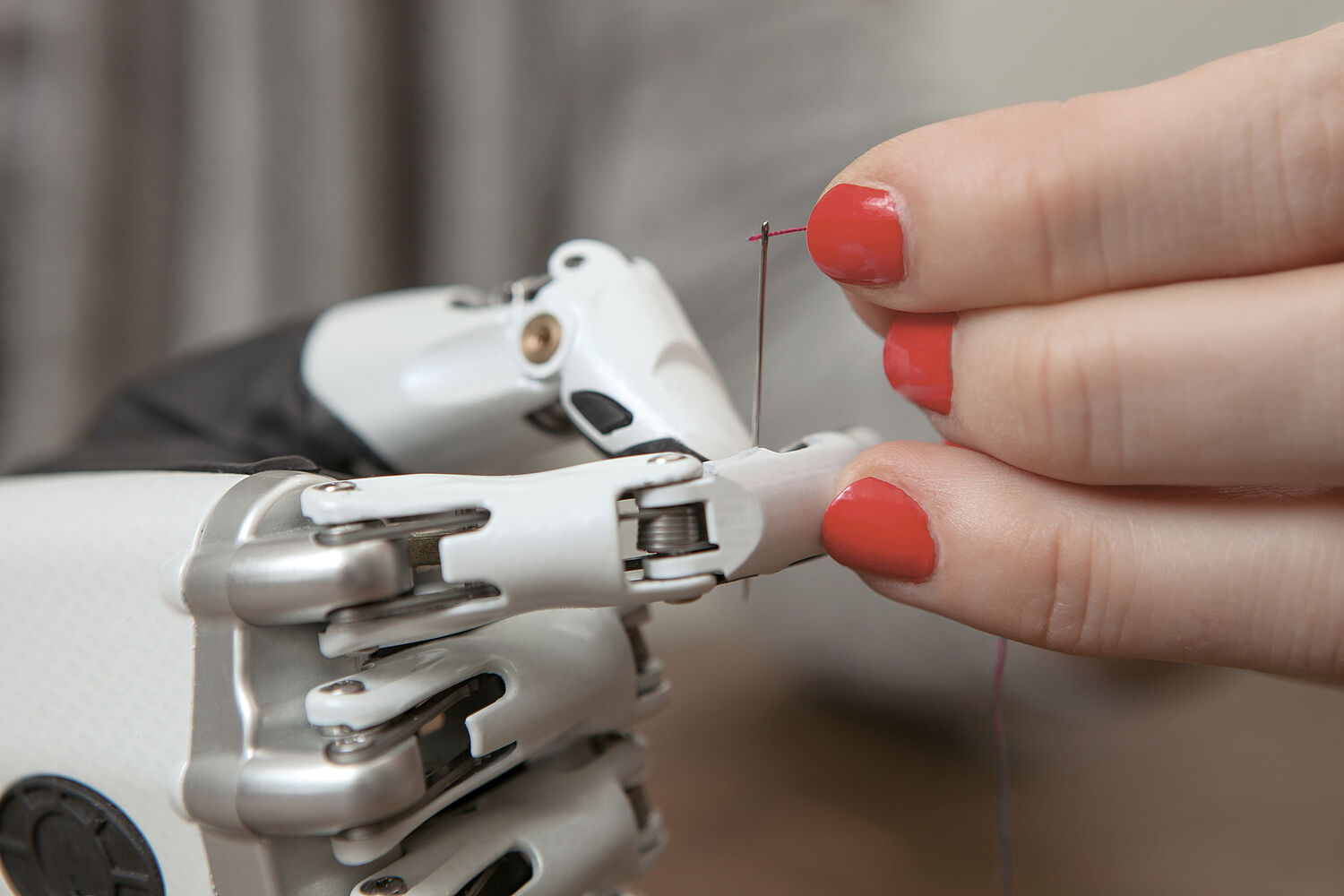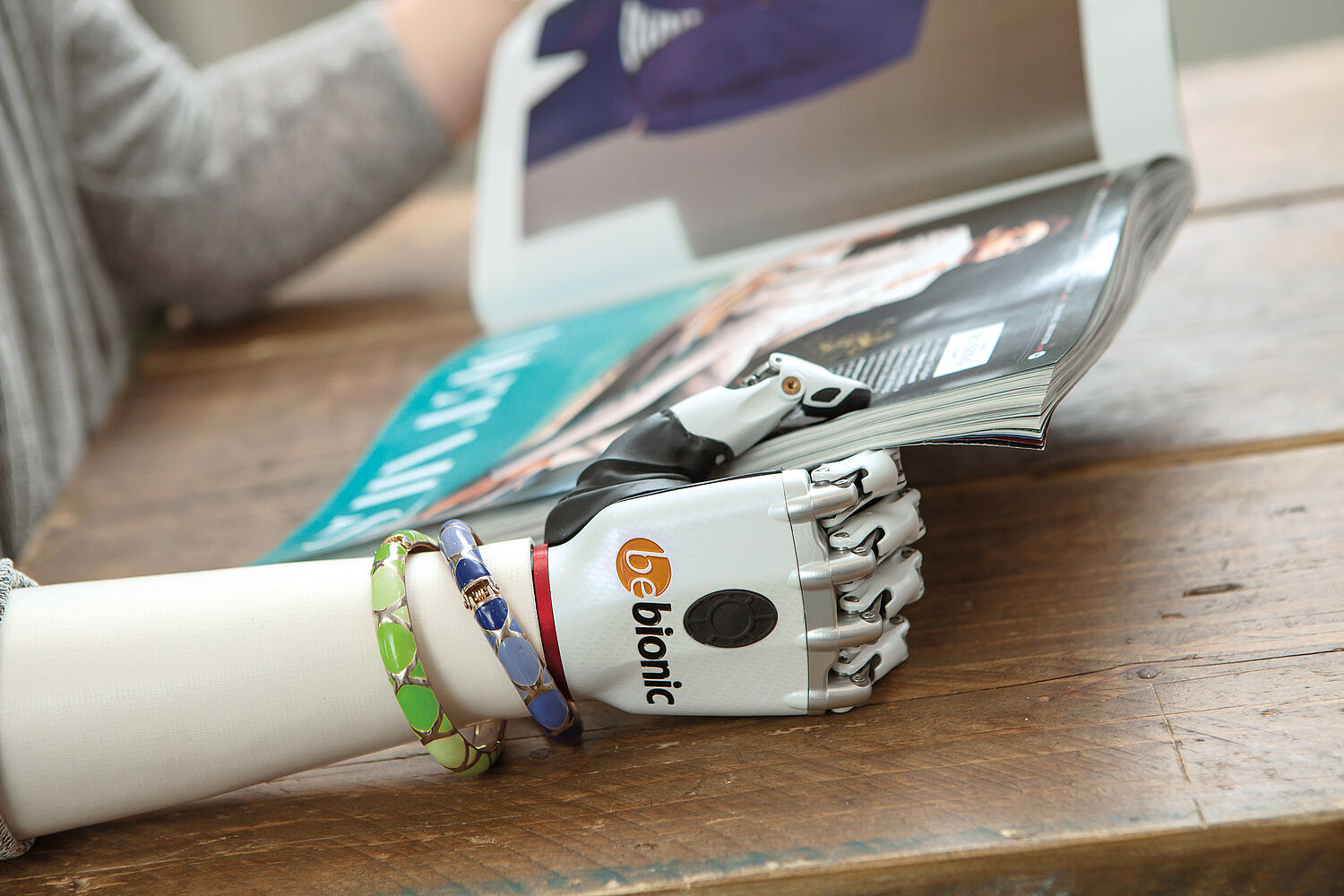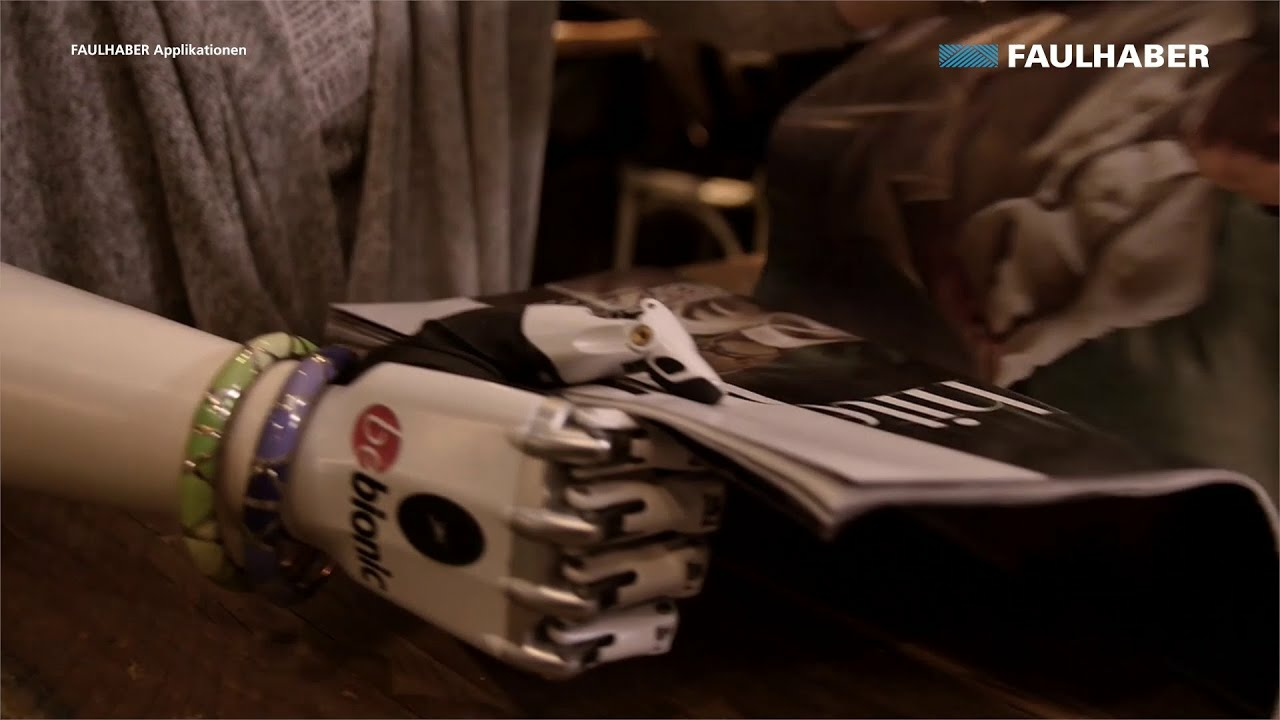Functional prostheses are known to most of us only in science fiction films which give the artificial extremities superhuman strength. By contrast, bionic hand prostheses do not make the wearer a superhero in real life. But they can make many things possible for them which are normal for most people.
Intuitive movement
The Bebionic myoelectric prosthesis weighs between 400 and 600 grams and is about as heavy as a natural hand. It is controlled by small electrical signals in the body. These are generated by muscle contractions and can be measured with electrodes on the skin – the same way as an ECG in heart diagnostics. Two electrodes, that are integrated into the prosthesis shaft, detect the myoelectric signals and forward them to the control electronics. These signals are amplified and used to activate the five small electric motors (one for each finger) that move the fingers and thumb – the hand opens or closes itself. As a result, the strength of the muscle contraction controls the speed and the gripping force: a weak signal generates a slow movement, a strong signal generates a quick movement.
The muscles which are used to open and close the hand prosthesis are actually responsible for the movement of the wrist in a natural hand. Its wearer must learn that it now has a different function. “The human brain is unbelievably adaptable. After a short amount of time, people perform the movement intuitively like how car drivers step on the brake when they want to stop,” says Ted Varley, Technical Director at Steeper.
Additional small dc motors for more control
The first myoelectric hand came onto the market at the start of the 1980s. They were driven by a single motor and only had a simple gripping mechanism: thumb, index and middle fingers could be closed for a pincer grip. Ring and small fingers were only available for cosmetic reasons and had no gripping force. This concept was fundamentally changed for the Bebionic hand about ten years ago. “We determined that people accept lower gripping force per finger if they get more flexibility,” explains Ted Varley. To control the individual fingers, each finger on the Bebionic hand is equipped with its own electric motor. The four small dc motors for the fingers are located in the palm of the hand, the fifth in the thumb itself. Encoders are integrated into the motors which precisely detect the position of the finger at any time.
Thanks to individual control, the fingers can be arranged into a total of 14 different grip patterns. With the key grip, which moves the thumb up and down with the fingers flexed, you can hold flat items such as plates, keys or bank cards. With the hook grip, heavy loads of up to 25 kilograms can be carried, the outstretched index finger permits the use of keyboards and remote controls. With the power grip, the thumb is in the opposite position and all fingers close until they encounter resistance. This is used to clasp irregularly shaped objects such as wine glasses. “This position looks much more natural than a pincer grip. The grip is also more stable if all fingers are used,” stresses Varley.
Increased self-esteem
The bionic hand makes many everyday activities easier. “Actually, it often are the small things which become easier with the prosthesis. To sum up, it leads to a clearly improved quality of life,” explains Ted Varley. Furthermore, the artificial hand also has a psychological effect: “Many users report that their feeling of self worth has increased with the Bebionic as they encounter interest and fascination with their new high-tech prosthesis.”
In this context, the attractive design of the prosthesis also plays an important role. “Our approach was rather unusual in prosthetics with the development of the third generation of Bebionic: We first developed the housing and then searched for solutions such as how the individual components can be housed,” emphasises Varley. “Five years ago, this would not have been possible for the small hand – the technology wasn’t advanced enough.” Also, the small dc motors of series 1024 SR that were predestined for this application were still in the development phase when Steeper turned to FAULHABER with this project in 2013. The project teams on both sides then expedited the development of the dc motor series and hand prosthesis at the same time. Regular meetings of the STEEPER and FAULHABER development teams took place in Great Britain and Switzerland. The intermediary of the meetings and the exclusive sales partner of FAULHABER in Great Britain, Electro Mechanical Systems (EMS), also took part. This intensive cooperation ultimately resulted in a motor with an exceptional powervolume ratio and tailor-made drive for the thumb which has brought this intense cooperation during development to a successful conclusion.
Top marks for performance
The new small dc motor of the 1024 SR series is actually the best of its class and the most powerful for its size on the market. With a diameter of 10 mm and a length of 24 mm, it delivers a stall torque rating of 4.6 mNm. It offers a consistently high torque across the entire speed range as a result of the flat speed/torque curve. The strong performance, among others, is made possible by the development of a new coil design which contains 60 percent more copper than its predecessor and has been combined with a powerful rare-earth magnet. In order to make the movement as quiet as possible, the artificial hand uses tailor-made planetary gearheads of series 10/1. “A significant challenge was the development of the linear drive system which had to be integrated into the thumb”, says Tiziano Bordonzotti, Sales Engineer at FAULHABER MINIMOTOR. Thanks to high-precision 4 point bearings from FAULHABER’s subsidiary, Micro Precision Systems (MPS), it was possible to make the drive significantly shorter than the competition. The unique features of the 4 point bearing make it possible for it to withstand the high axial forces necessary for the application despite the smaller dimensions compared to alternative bearing systems. The entire thumb drive can withstand an axial force of up to 300 N with an overall length of less than 49 mm.
Ted Varley is excited by the result of the collaboration: “The Bebionic hand in size S is the most realistic myoelectric hand prosthesis on the market. It would not have been possible to realise this project without close cooperation with the committed project team of FAULHABER.”
